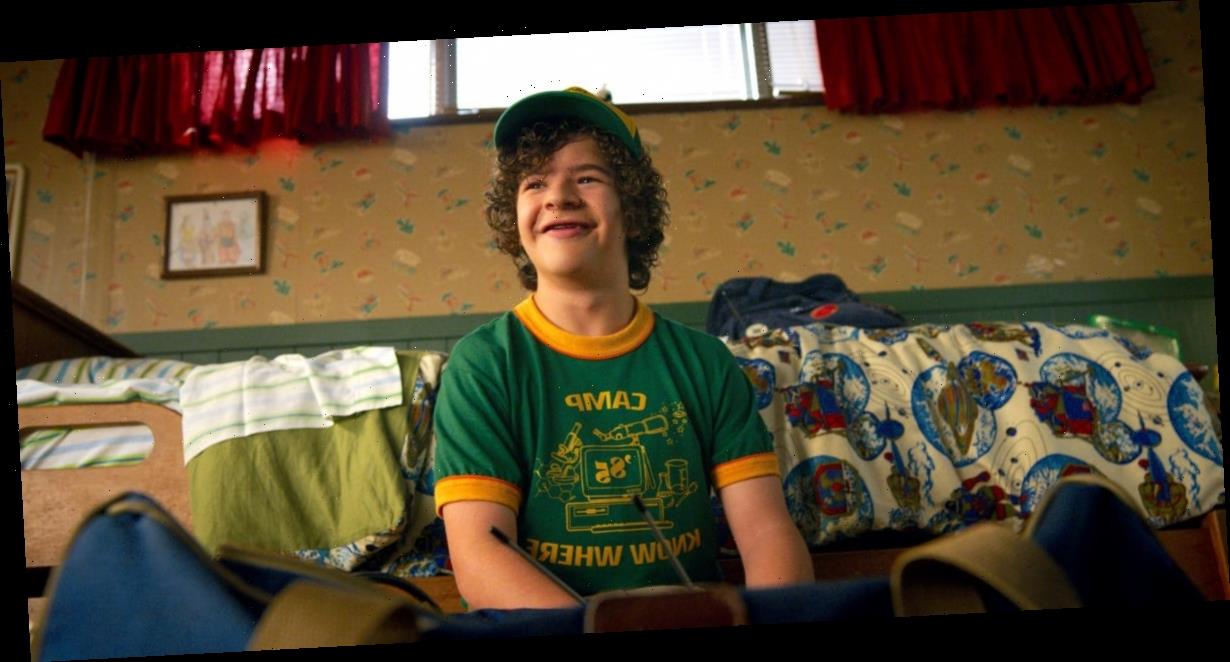- Cleidocranial dysplasia is a disease that affects one in a million people, including Stranger Things actor Gaten Matarazzo.
- In a JAMA research letter, researchers explored how Matarazzo's presence onscreen raised awareness of the disease. Google Trends showed that Google searches related to the disease spiked after each season.
- "Usually when things like this are portrayed onscreen, it's a TV show or a movie focusing on the effects of the disorder," said research co-author Austin Johnson. "On Stranger Things, it's not about medicine at all. It's actually just a normal kid."
- Visit Insider's homepage for more stories.
Cleidocranial dysplasia is a disease that affects one in a million people — including Gaten Matarazzo, who most people will recognize as Dustin Henderson from Stranger Things.
And according to new research published Thursday in JAMA, Matarazzo's presence on the Netflix hit drastically raised awareness of this rare disease.
With the release of each season came a spike in people Googling cleidocranial dysplasia. After season 1, searches for the disease increased by 11.2%, and after season 2, searches increased by 12.9%. Other notable spikes appeared when Matarazzo made an appearance on the UK's Jonathan Ross Show, and by the premiere of season 3 of the show.
"The toothless grin of Dustin is kind of a fan favorite," the study's co-author Austin Johnson, a 26-year-old medical student at Oklahoma State University, told Insider on Thursday, days after the release of the trailer for season 4.
Johnson says he, too, learned about the condition for the first time through Stranger Things: it was playing in the background one night when he was working late, and he heard Matarazzo's character describing the disorder.
His interest was piqued. Googling it, he found it was a rare disease that involved absent or abnormal bone growth of the clavicles and teeth, and he wondered how many other people had had a similar reaction.
Experts say this awareness has a tangible impact. "One of our parents coined the term, 'More sharing leads to less staring,'" Erica Mossholder, executive director of the nonprofit Children's Craniofacial Association, told US News.
People with cleidocranial dysplasia, an inherited disease, may not lose their baby teeth and may not grow collarbones
Cleidocranial dysplasia is likely to be underdiagnosed, as many individuals may only have mild symptoms of it.
But prior to Stranger Things, few people would recognize the name of it.
"I told you a million times, my teeth are coming in. It's called cleidocranial dysplasia," Dustin snaps at bullies on season one of Stranger Things. In season two, Dustin has dentures, but he loses them by season 3 because his long distance girlfriend Suzie thinks kissing without teeth is better.
In real life, Matarazzo just went through a surgery to remove 14 of his extra teeth.
The disease is caused by mutations of the RUNXT gene, which triggers the development and maintenance of teeth, bones, and cartilage, which can affect the growth of bones and teeth.
People with this disease may not be able to lose their baby teeth and may not have collarbones. Many affected individuals tend to be shorter than their family members, have flat feet, knock knees, and a wide, short skull. People with the disease may have decreased bone density, meaning their bones are more brittle and prone to breaking.
While many other shows have portrayed rare diseases, most notably House and Chasing The Cure, this show is different in that Matarazzo's disease is not the focus of the show.
"Usually when things like this are portrayed onscreen, it's a TV show or a movie focusing on the effects of the disorder," said Johnson. "On Stranger Things, it's not about medicine at all. It's actually just a normal kid."
Read more:
Netflix released the first teaser for season 4 of 'Stranger Things,' and it reveals the fate of Hopper
27 details you might have missed on 'Stranger Things 3'
Here's what the cast of 'Stranger Things' looks like in real life
Source: Read Full Article
